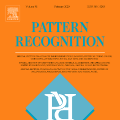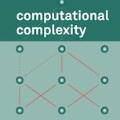Deep neural networks have obtained astounding successes for important pattern recognition tasks, but they suffer from high computational complexity and the lack of interpretability. The recent Tsetlin Machine (TM) attempts to address this lack by using easy-to-interpret conjunctive clauses in propositional logic to solve complex pattern recognition problems. The TM provides competitive accuracy in several benchmarks, while keeping the important property of interpretability. It further facilitates hardware-near implementation since inputs, patterns, and outputs are expressed as bits, while recognition and learning rely on straightforward bit manipulation. In this paper, we exploit the TM paradigm by introducing the Convolutional Tsetlin Machine (CTM), as an interpretable alternative to convolutional neural networks (CNNs). Whereas the TM categorizes an image by employing each clause once to the whole image, the CTM uses each clause as a convolution filter. That is, a clause is evaluated multiple times, once per image patch taking part in the convolution. To make the clauses location-aware, each patch is further augmented with its coordinates within the image. The output of a convolution clause is obtained simply by ORing the outcome of evaluating the clause on each patch. In the learning phase of the TM, clauses that evaluate to 1 are contrasted against the input. For the CTM, we instead contrast against one of the patches, randomly selected among the patches that made the clause evaluate to 1. Accordingly, the standard Type I and Type II feedback of the classic TM can be employed directly, without further modification. The CTM obtains a peak test accuracy of 99.51% on MNIST, 96.21% on Kuzushiji-MNIST, 89.56% on Fashion-MNIST, and 100.0% on the 2D Noisy XOR Problem, which is competitive with results reported for simple 4-layer CNNs, BinaryConnect, and a recent FPGA-accelerated Binary CNN.
翻译:深心神经网络在重要模式识别任务中取得了令人吃惊的成功,但是它们受到计算复杂性高和缺乏解释性的影响。最近的Tsetlin Machine (TM) 试图通过在假设逻辑中使用简单易懂的共鸣条款解决复杂模式识别问题来解决这一缺陷。 TM 在几个基准中提供了竞争性的准确性,同时保留了解释性的重要属性。 它进一步促进了硬件的近距离执行,因为投入、模式和产出表现为比特点,而承认和学习则依赖于直接的比特操作。 在本文中,我们利用TM 模式, 引入了Culvaal Tsetlin Meach (CTM), 以直接的可解释的替代 共振动神经网络(CNNs ) 。 虽然TM 将图像分类为每个条款一到整个图像, 而CTM 使用每个条款的相对准确性, 也就是对每个图像的精确度进行多次评价, IMFMI 的相对性条款的精确性, 也就是对一个直径直到直路段。





